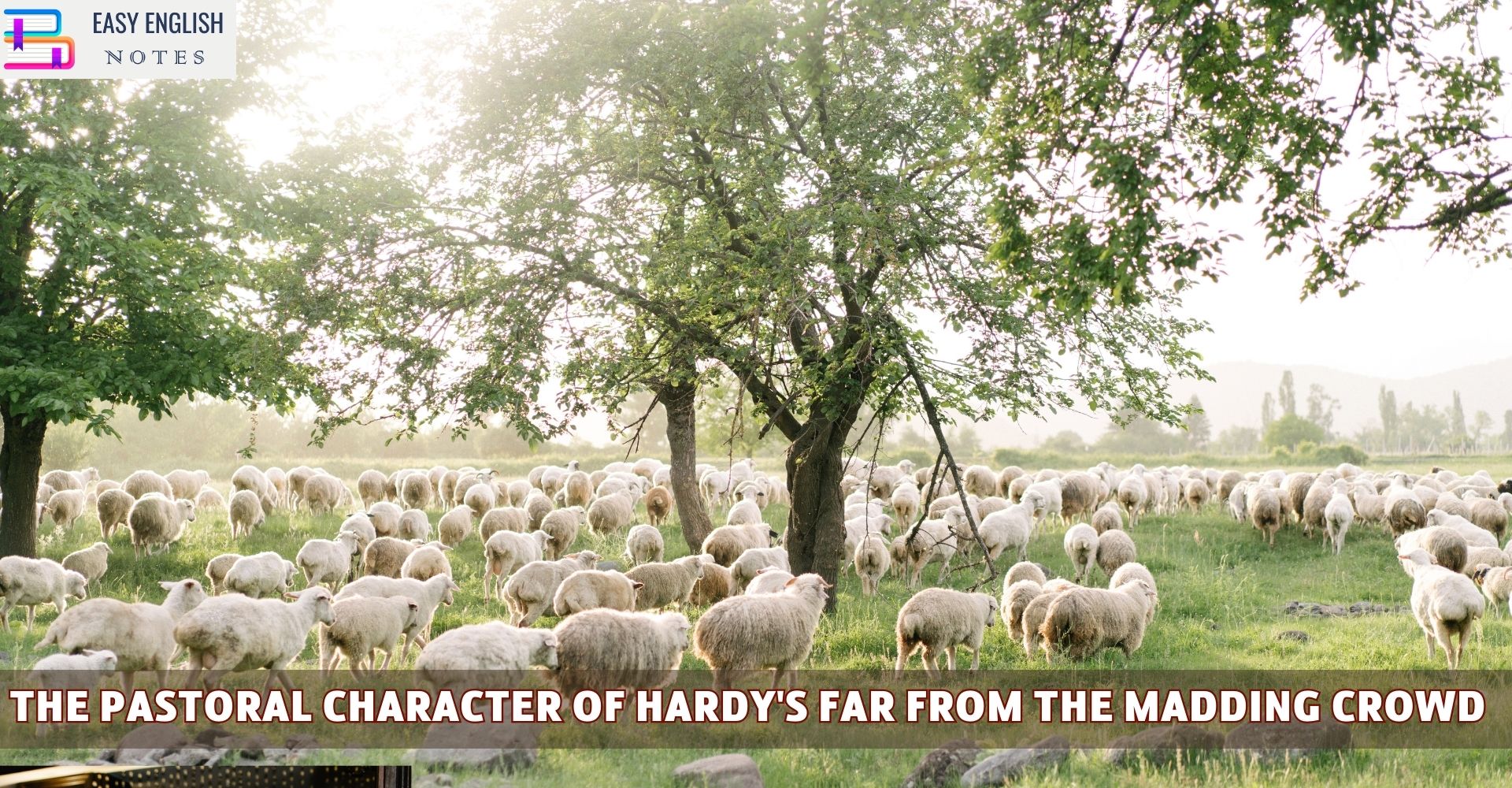Introduction:
“Far From the Madding Crowd” by Thomas Hardy is a quintessential pastoral novel that encapsulates the rustic beauty and simplicity of rural life in nineteenth-century England. This classic work is a vivid exploration of the pastoral genre, where nature, the countryside, and the lives of its inhabitants take center stage. Here, we delve into the pastoral character of the novel and how it contributes to the story’s charm and depth.
Rural Landscape as a Character:
One of the defining features of the pastoral novel is its portrayal of the countryside as a character in its own right. In “Far From the Madding Crowd,” the rural landscape of Wessex, a fictional region in southwest England, plays a pivotal role. Hardy’s exquisite descriptions of rolling hills, fertile farmland, and picturesque villages breathe life into this bucolic setting. The author’s deep affection for the countryside is evident in his meticulous depiction of Wessex, which becomes an essential character in the narrative.
Wessex as a word from English History:
Hardy is the most eminent regionalist novelist of England. He has painted the manners, customs and places of Wessex very, realistically. A very famous critic D’ Exiduil has rightly observed on the Wessex background in his novels in these words. “In Wessex, the legendary kingdom bequeathed by Alfred, where almost all his scenes are laid Hardy was king. He was the unchallenged monarch of Berkshire, Wiltshire, Somerset, Dorset and Devon, united under the sceptre of his pen, what authority he wielded in a country which owed to him the revelation of its beauty.”
It was first in the novel which was serially appearing in the magazines that Hardy made use of the word Wessex, which was very much in use in the ancient history of England.
Love for the Countryside:
Thomas Hardy’s affection for the southern part of England, referred to as Wessex, runs deep. He possessed an intimate knowledge of the region’s physical features, a profound understanding of its historical past, and a keen awareness of its morals and manners. In “Far From the Madding Crowd,” Hardy masterfully portrays the customs, traditions, and locales of Wessex with remarkable realism. His descriptions are so vivid that readers can effortlessly conjure up mental images of the Wessex landscape. Just as Chaucer’s pilgrims were associated with Southwark and the Canterbury road of the 1380s, Hardy’s characters belong to the Wessex of Weatherbury, Little Hintock, and Casterbridge, albeit five centuries later. Through his novels, Hardy breathes life into Wessex, making its entire history come alive in the minds of his readers.
Also Read :
- Compare Hamlet with Macbeth, Othello and other Tragedies
- “The Pardoner’s Tale” is the finest tale of Chaucer
- Prologue to Canterbury Tales – (Short Ques & Ans)
- Confessional Poetry – Definition & meaning
- Line By Line Explanation Of The Poem The Eve of St. Agnes
The Peasantry of Wessex:
In Far From the Madding Crowd the Wessex farmers play a leading role. Really Hardy was deeply moved by the destruction of the peasantry through the onslaught of the industrial revolution. He had intimate love for old England with its simple village folk, with their robust health and straightforward manners. Therefore his prolific pen produced novel after novel describing the life of the peasantry of Wessex. The use of the rustic characters in the novels of Hardy serves the purpose of providing us with the local colour. The appeal of Far From the Madding Crowd is mainly because of Wessex, a very realistic picture has been given in the novel.
The backbone of “Far From the Madding Crowd” is the Wessex peasantry. Hardy was profoundly affected by the decline of the peasantry due to the encroachment of the industrial revolution. He held a deep affection for old England, particularly its simple village folk with their robust health and straightforward manners. Consequently, his prolific writing delved into the lives of the Wessex peasantry. The rustic characters that populate Hardy’s novels serve to provide a rich local flavor, and “Far From the Madding Crowd” is a prime example of this. The novel’s enduring appeal is largely due to the authenticity with which it portrays the life and culture of Wessex.
Pastoral Element in the novel:
The hero of the novel Far From the Madding Crowd is a shepherd. His chief occupation is looking after his sheep and agricultural farm. The description of the loss of his sheep adds an element of pastoralism to the novel. The farm of Boldwood and the farm of Bathsheba are integral pastoral elements in the novel.
The protagonist of “Far From the Madding Crowd,” Gabriel Oak, is a shepherd, and his occupation infuses the story with a pastoral element. His primary responsibility is tending to his sheep and overseeing his agricultural pursuits. The novel contains vivid descriptions of the pastoral landscape, including the farms of Boldwood and Bathsheba. These elements contribute to the rural charm and atmosphere of the story.
Conclusion:
Thus Wessex is the dominating character brooding constantly over Hardy’s works. The men and women in the novels of Hardy belong to the nineteenth century, but they represent curious fears, superstitions, folklore and dialects which impart great charm to the novel.
In the literary universe of Thomas Hardy, Wessex stands as a dominant character, a constant presence brooding over his works. Although his characters belong to the 19th century, they embody peculiar fears, superstitions, folklore, and dialects that lend a unique and enduring charm to his novels. Through his masterful storytelling and deep connection to the Wessex region, Hardy has immortalized this corner of England and its people, allowing readers to traverse its landscapes and immerse themselves in its rich tapestry of life. Wessex, as depicted by Thomas Hardy, continues to captivate and resonate with audiences, serving as a testament to the power of regional literature to transcend time and place.
PLEASE HELP ME TO REACH 1000 SUBSCRIBER ON MY COOKING YT CHANNEL (CLICK HERE)











